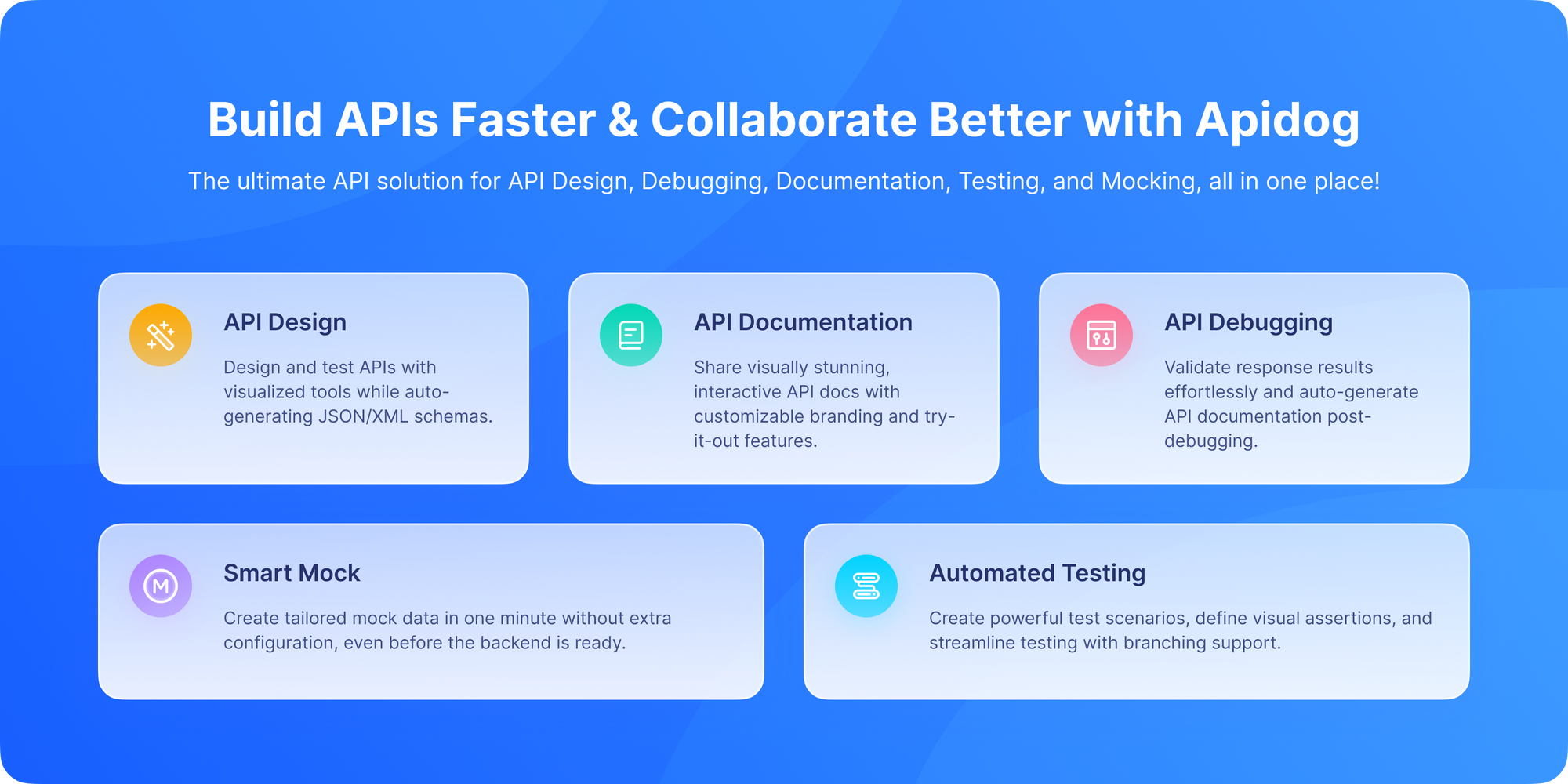Alright, let's talk about one of the most frustrating and enigmatic status codes in the world of web development: 499. If you're a backend developer, a DevOps engineer, or someone who spends a lot of time staring at server logs, you've probably seen this guy pop up. And if you haven't, consider yourself lucky for now.
Unlike its official cousins in the HTTP status code family (like the famous 404 Not Found or the dreaded 500 Internal Server Error), the 499 status code is a total rebel. It doesn't come from the HTTP standard. In fact, you won't find it in any RFC document. But what exactly is this 499 status code? Why does it happen? And what does it mean for your website or API? And more importantly, how can you prevent it from messing with your application's performance?
Simply put, a 499 status code is your server's way of throwing its hands up in the air and saying, "Well, the client I was talking to just hung up on me mid-conversation. I guess I'll just log this and move on."
If these questions sound familiar, this blog post is here to help with a clear, conversational explanation and real-world examples. Before we dive into the deep end, if you're someone who regularly wrestles with API mysteries and server logs, you need a tool that gives you clarity. Download Apidog for free; it's an all-in-one API platform that simplifies building, testing, and debugging APIs. With features like mock servers and detailed inspection, you can catch issues on the client-side before they ever manifest as confusing server errors like 499.
Want an integrated, All-in-One platform for your Developer Team to work together with maximum productivity?
Apidog delivers all your demands, and replaces Postman at a much more affordable price!
Now, let's unravel this mystery together.
Setting the Stage: A Quick Refresher on HTTP Status Codes
First things first, to understand the outlier, we need to understand the standard. HTTP status codes are three-digit numbers returned by a server in response to a client's request. They are grouped into five classes:
- 1xx (Informational): "I got your request, and I'm working on it." (e.g., 100 Continue)
- 2xx (Success): "I got your request, understood it, and successfully handled it." (e.g., 200 OK, 201 Created)
- 3xx (Redirection): "You need to go somewhere else to finish this." (e.g., 301 Moved Permanently, 304 Not Modified)
- 4xx (Client Error): "You messed up." The request was malformed, unauthorized, or you asked for something that doesn't exist. (e.g., 400 Bad Request, 401 Unauthorized, 404 Not Found)
- 5xx (Server Error): "I messed up." The server is aware that it has encountered an error and can't fulfill the request. (e.g., 500 Internal Server Error, 502 Bad Gateway, 504 Gateway Timeout)
The 499 response code falls into the 4xx category, which indicates a client-side issue. But its origins are what make it special.
The Origin Story: Why 499 Isn't an "Official" Code
Here’s the crucial part: the 499 response code is not defined by any official internet standard like the RFCs that define 404 or 500.
So, where did it come from?
The 499 response code is a non-standard, custom code introduced by the nginx web server. Nginx is one of the most popular web servers and reverse proxies in the world, powering a huge portion of the internet. Because it's so ubiquitous, its custom codes have become de facto standards that many other tools and developers have adopted.
Nginx needed a way to log a specific scenario that the standard HTTP codes didn't quite cover: when a client closes the connection before the server has had a chance to send a full response.
In the nginx source code and documentation, 499 is defined as "Client Closed Request" (sometimes you might also see "Connection closed by client"). This is nginx's unique way of labeling this particular event in its access logs.
What Does "Client Closed Request" Actually Mean?
Let's use a simple analogy. Imagine you call a busy customer service line.
- You make the call (this is the client initiating a request).
- You're placed on hold (the server is processing your request; this could take time if the server is slow or the operation is complex).
- Before an agent can come on the line, you get impatient and hang up (this is the client closing the connection).
The customer service center then makes a note in their log: "Caller ID [your number] - hung up while on hold." This note is their version of a 499 code.
In technical terms, here's the sequence of events:
- A client (like a user's web browser, a mobile app, or another service) sends an HTTP request to your server running behind nginx.
- Nginx accepts the request and begins processing it, often by passing it to a backend application (like a Node.js, Python, or PHP app).
- The backend application starts working on crafting the response. This might involve complex calculations, database queries, or calling other services.
- Meanwhile, the client gets impatient, encounters an error itself, or the user simply navigates away from the page or cancels the request.
- The client's operating system or HTTP library closes the underlying TCP connection.
- Nginx, which was waiting to send the response back through that now-dead connection, detects that the socket has been closed. It can't deliver the response.
- Nginx aborts the request, logs it with a 499 status code in its access logs, and moves on.
The key takeaway is that the server did not necessarily fail. The application might have been milliseconds away from returning a perfect 200 OK response. But because the client vanished, the server never got the chance to send it.
Why Would a Client Close a Request? Common Causes
A 499 error is almost always a symptom of a problem on the client-side or in the network pathway, not a bug in your server's logic. However, that doesn't mean your server is blameless. Often, your server's performance is what triggers the client's impatience. Let's break down the usual suspects.
1. User Impatience and Navigation (The Most Common Cause)
This is the classic. A user clicks a link or a button in a web browser. The server takes too long to respond. The user, frustrated, hits the stop button, the ESC key, or simply clicks a different link to navigate away. The browser cancels the original pending request, closing the connection.
2. Client-Side Timeouts
Applications don't wait forever. Most HTTP clients (libraries like curl, Python's requests, or browsers) have built-in timeout settings. If a response isn't received within a certain timeframe, the client will abort the request and close the connection to free up resources. If your server is slow, it will frequently run into these client-side timeouts.
3. Browser and Client Specific Behaviors
Some browsers are more aggressive than others in canceling requests they deem unnecessary, especially during page unload events. Modern browsers also prioritize resources; they might cancel a request for a low-priority image if the user is interacting with the page.
4. Unstable or Poor Network Conditions
A flaky mobile data connection or a spotty Wi-Fi network can cause packets to be lost. If the client doesn't receive packets from the server for a while, it might assume the connection is dead and close it. Similarly, a proxy or firewall between the client and server could prematurely terminate a long-lived connection.
5. Server-Side Performance Issues (The Indirect Cause)
While the client initiates the close, the root cause is often that the server is simply too slow. If your application or database is under heavy load, suffering from high latency, or stuck in a long-running process, it increases the window of time in which a client is likely to get impatient and cancel.
This is why a sudden spike in 499 errors is a crucial performance indicator it’s a signal that your backend is not responding in a timely manner. Other servers don’t usually use 499. Apache, for instance, doesn’t log it by default. But since Nginx is so widely used, you’ll often run into this code if your infrastructure involves it.
499 vs. Other Status Codes: How to Tell the Difference
It's easy to confuse a 499 with other errors, but the context is key.
499 vs. 400 Bad Request / 408 Request Timeout
This is the most important distinction.
- 400 Bad Request: The server can’t understand the request (bad syntax).
- 408 Request Timeout: This is an official HTTP status code. A server sends a 408 when it has a timer set and it itself decides that the client is taking too long to send the request. For example, the client started sending a request body but didn't finish sending it within the server's allotted time.
- 499 Client Closed Request: The client is the one who gets impatient and closes the connection while waiting for the server's response.
In short, 400 and 408 are server-side timeouts on the request intake. 499 is a client-side timeout on the response output.
499 vs. 502 Bad Gateway / 504 Gateway Timeout
If you're using nginx as a reverse proxy, you might see these often.
- 502 Bad Gateway: Nginx received an invalid response from the backend application (e.g., the backend crashed while sending the response).
- 504 Gateway Timeout: Nginx waited for the backend application to respond, but the backend didn't respond to nginx within the configured timeout period.
- 499: The backend might have been responding, but the client disappeared before nginx could relay that response.
A 504 means your backend is too slow for nginx. A 499 means your backend is too slow for the end-user's client.
How to Reproduce a 499 Error
If you want to see this in action, here’s how you can simulate a 499:
- Run a slow API request (something that takes 10+ seconds).
- While waiting, cancel the request in your tool (say, Apidog, cURL, or Postman).
- Nginx logs will show a
499response.
This is handy for debugging because you can reproduce what happens when users cancel requests in the real world.
Why 499 Matters for Your Application
You might think, "The client is gone, so who cares?" Well, you should. 499 errors can mask real problems and lead to wasted resources.
- Wasted Server Resources: Your backend application might have spent valuable CPU cycles, memory, and database connections to compute a response that was never delivered. If this happens frequently, it can contribute to the load on an already struggling server, creating a vicious cycle.
- Masking Real Performance Issues: A high rate of 499s is a giant, flashing neon sign that says "OUR BACKEND IS TOO SLOW!" It's a critical performance metric that tells you users are experiencing latency and giving up.
- Data Inconsistency Risks: Imagine a canceled request was a
POSTrequest to create an order or transfer funds. The backend might have already completed the operation, but the client, having received no confirmation, might retry the request. This is why idempotency keys (using a tool like Apidog to test them is crucial!) are so important for non-idempotent operations to prevent duplicate actions. - Poor User Experience: Ultimately, this error represents a frustrated user. They either didn't get what they wanted or had to try again, leading to a clunky and unreliable feel for your application.
How to Troubleshoot and Fix 499 Response Code
Fixing 499s is less about "fixing the error" and more about "fixing the conditions that cause it." Your goal is to make your server respond faster than the client's patience runs out.
Step 1: Identify the Pattern
- Check your nginx access logs. They are your primary source of truth. Look for patterns: are 499s concentrated on a specific endpoint (e.g.,
/api/complex-report)? Do they spike at certain times of day? - Correlate with metrics. Cross-reference the times of 499 spikes with other metrics like CPU usage, memory consumption, database load, and backend response times from your APM (Application Performance Monitoring) tools.
Step 2: Investigate Client-Side Behavior
- What are the client timeouts? If you control the client (e.g., a mobile app or SPA), check its configured timeout values. Are they reasonable?
- Simulate the issue. Use browser DevTools or a tool like Apidog to throttle your network connection to "Slow 3G" and make requests. You can watch as requests get canceled (showing as "canceled" in the Network tab) and see if it correlates with 499s in your logs.
Step 3: Optimize Your Backend Performance
This is the most effective long-term solution.
- Database Optimization: Are slow queries plaguing your endpoint? Use query EXPLAIN plans, add missing indexes, or introduce caching (with Redis or Memcached) for frequent, expensive queries.
- Code Profiling: Profile your application code to find and eliminate bottlenecks. Is there a loop that's inefficient? Is the algorithm too complex?
- Background Jobs: For long-running operations (like generating reports, processing images, or sending emails), don't make the user wait. offload that work to a background job system (like RabbitMQ, Redis Queue, or Celery). Have the API endpoint immediately return a 202 Accepted response with a job ID, and allow the client to check on the status later.
- Asynchronous Processing: Use async frameworks (like Node.js, Python's ASGI with FastAPI, or Go's goroutines) to handle many waiting connections efficiently without blocking.
Step 4: Tune Your Nginx Configuration
You can adjust nginx's behavior to be more resilient, though this doesn't address the root cause.
Adjust proxy_ignore_client_abort:
proxy_ignore_client_abort off;(Default): If the client aborts, nginx aborts the request to the backend and logs 499.proxy_ignore_client_abort on;Nginx will continue processing the request with the backend even if the client leaves. This prevents wasted backend work only if the client is likely to retry, but it can also consume resources for a client that is truly gone. Use this with extreme caution.
Adjust Timeouts: Ensure your proxy_read_timeout (how long nginx waits for a response from the backend) is set appropriately. It should be higher than your client's timeout but not so high that it ties up resources indefinitely.
Real-World Examples of 499 Response Code
Let’s bring this closer to home with some practical scenarios:
- E-commerce checkout: A payment API takes too long, and the user cancels. If the backend still processes the request, you risk confusion (payment succeeded, but the client never saw it).
- Streaming apps: A video API starts fetching, but the user skips to another video. The first request gets cut short → logged as 499.
- Mobile apps: Poor connectivity causes timeouts, leading to dropped requests.
In all these cases, 499 isn’t "bad" per se, but it highlights friction in your system.
How Apidog Helps You Prevent and Debug 499 Errors

This is where a powerful API toolset becomes invaluable. Apidog isn't just for sending requests; it's for understanding the entire API lifecycle and catching issues before they hit production.
- Performance Testing & Timeout Simulation: Before deployment, use Apidog to test your API endpoints under load. You can simulate slow responses and see how your client code handles them. This helps you identify endpoints that are prone to causing client-side timeouts before your users do.
- Client-Side Debugging: When a user reports a bug, you can use Apidog to exactly replicate the network conditions and requests they were making. You can see the precise timing and headers, helping you determine if a cancellation was due to a timeout or another issue.
- Designing for Resilience: Apidog helps you design and test APIs that are less susceptible to these issues. For instance, you can easily prototype and test endpoints that use asynchronous patterns (returning 202 Accepted) instead of forcing the client to wait for a long sync operation.
This means instead of guessing why 499 shows up, you can test, measure, and fix. Using Apidog shifts the focus from reactive log analysis to proactive API design and testing, means catching issues that lead to 499 before they become user-impacting problems, helping you build faster, more reliable services that keep your users happy and your logs free of 499 errors.
Final Thoughts
So, what is the 499 response code?
It’s a non-standard HTTP status used by Nginx that means the client closed the request before the server could respond. The HTTP 499 status code, while unofficial and often confusing, is far from meaningless. It’s not an error to be "fixed" in the traditional sense, but a vital signal a canary in the coal mine of your application's performance. While it’s not technically a “server error,” it’s still worth paying attention to because it can reveal:
- Performance bottlenecks,
- Poor client behavior, or
- Misaligned timeouts.
It tells you a clear story: a user was waiting, and they gave up. Your job is to listen to that story. By monitoring 499s, optimizing response times, and testing client-server interactions, you can improve both API reliability and user experience. And remember you don’t have to debug alone. Tools like Apidog help you design, test, and monitor APIs, making it easier to catch and handle weird cases like 499, you can ensure that your users never feel the need to hang up the phone again.



